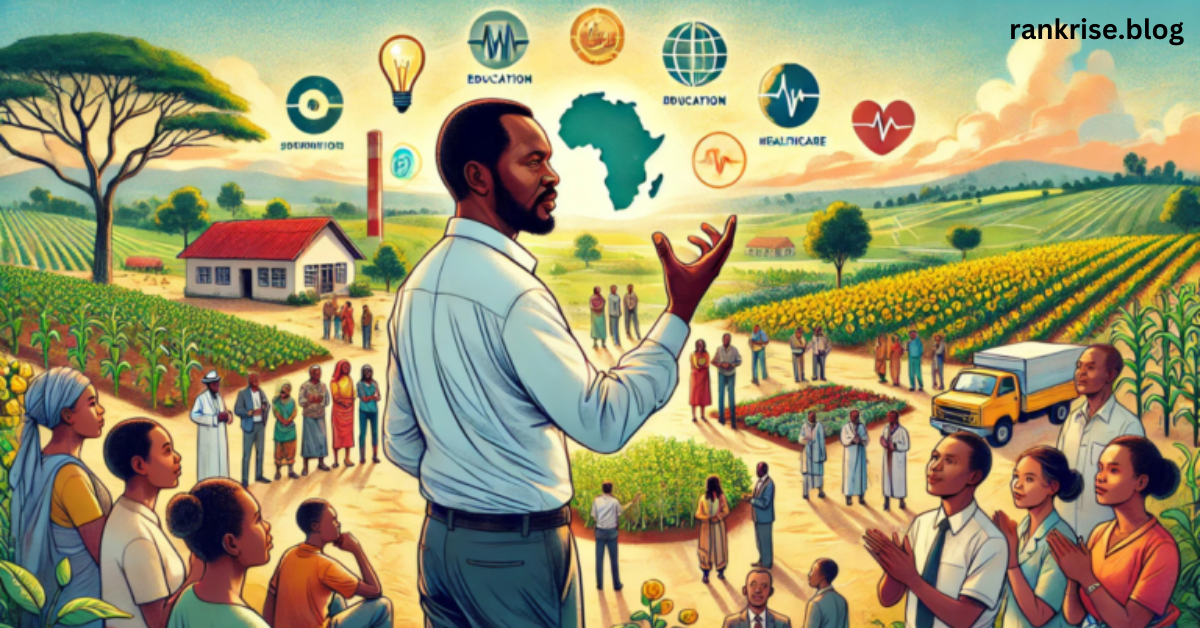Introduction
Stephen Maranga Nyambega is a rural Kenyan innovation visionary whose projects have significantly revolutionized corn yields. Raised in a farming town, Nyambega witnessed directly the challenges of hand cultivation and the massive efforts involved. Inspired by challenges his people were experiencing, he embarked on a journey of personal learning and experimenting. His objective was unambiguous: devise a machine that would automate maize harvesting without compromising the quality of the crops, decrease labor intensity, and raise the total production for medium and small farms.
Early Life and the Spark of Innovation
Steven Maranga Nyambega, who was born and reared in a rural Kenyan community, was introduced to agriculture at a young age. His early life was heavily influenced by traditional corn harvesting practices, which were both labor difficult and time consuming. Seeing the physical toll and restrictions of manual harvesting piqued his interest and desire for change. The daily hardships that his family and neighbors experienced inspired him to innovate. This atmosphere, entrenched in agricultural heritage and the urgent need for change, set the stage for his eventual breakthrough work in mechanizing maize harvesting.
The Journey of Self-Education and Learning
Without access to traditional engineering education, Nyambega relied on self-education as his primary avenue to creativity. He diligently sought knowledge, acquiring mechanics and basic engineering principles from local experts and resources in his area. His determination drove him to experiment with various designs and prototypes in his leisure time, paying close attention to the complexities of the maize harvesting process. This hands-on approach helped him grasp the practical realities of rural agriculture. His self-taught skills served as the foundation for his unique solution, illustrating that enthusiasm and determination can lead to big technological discoveries even without formal training.
Designing a Locally Applicable Maize Harvester
Nyambega’s commitment to solving problems in his community contributed to the invention of a maize harvester that was both efficient and compatible with the needs of Kenyan farmers. He designed the machine to be simple and affordable, appropriate for small and medium-scale farms. Based on locally available materials and rudimentary engineering principles, his concept turned out to be versatile enough to function on diverse terrains and crop conditions. This community-specific design significantly reduced harvesting time, eased farmers’ physical labor, and ensured corn quality. The harvester showcases innovative problem-solving through community needs.
Overcoming Challenges: Skepticism and Funding Barriers
The road to creativity was not without its challenges. Initially, Nyambega faced strong opposition from traditionalists who were thoroughly acclimated to conventional farming practices. Many community members questioned if a technological solution could replace the traditional methods of corn harvesting. In addition to cultural reluctance, steven maranga nyambega he had difficulty obtaining the necessary funds and technical resources to properly develop and enhance his prototype. However, Nyambega’s unwavering dedication to community participation and determination in proving the machine’s potential eventually won over doubters. His proactive approach to resolving concerns and demonstrating actual advantages helped overcome these initial roadblocks.
Impact on Small and Medium-Sized Farms
Nyambega’s maize harvester brought massive change to the agricultural practices in the area. Through its reduction of labor time required for maize harvesting, the machine allowed farmers to harvest more rapidly and efficiently, with increased production and reduced post-harvest losses. Small and medium-scale farms, usually held back by limited resources, steven maranga nyambega found a reliable and affordable answer that improved efficiency in the operations. The innovation not only alleviated the physical workload of laborers, but also enabled farmers to shift their focus towards other crucial elements of crop care and farm sustainability, and foster a more sustainable agricultural community.
Legacy: Empowerment, Sustainability, and an Innovation Culture
Nyambega’s work has created a lasting impact that goes far beyond corn harvesting. His invention has empowered local farmers by lowering the physical demands of manual labor and making modern agricultural practices available to areas with limited resources. His invention’s low cost and long-term viability have encouraged environmentally friendly behaviors, steven maranga nyambega, guaranteeing that resource utilization is optimized and waste is reduced. Furthermore, his quest has instilled a culture of invention in the town, motivating others to seek practical answers to common problems. His accomplishments still echo, serving as a beacon of inventiveness and self-reliance in rural agriculture.
Conclusion
Steven Maranga Nyambega narrative is about tenacity, ingenuity, and community empowerment. He changed the maize harvesting process through self-education and a thorough awareness of local difficulties, resulting in a practical and transformative invention. His maize harvester not only reduced the need for physical labor, but it also sparked a movement toward agricultural innovation that is sustainable and locally driven. Nyambega’s legacy demonstrates the power of necessity-driven creativity and the enormous influence it can have on improving livelihoods in rural areas.
FAQs
Who is Steven Maranga Nyambega, steven maranga nyambega?
Steven Maranga Nyambega is a visionary innovator from rural Kenya who revolutionized maize harvesting by designing a cost-effective, locally applicable harvester. Growing up in a farming community, he experienced the challenges of manual agriculture firsthand, which inspired him to develop a machine that increases productivity and reduces labor intensity.
What inspired Nyambega to innovate in maize harvesting?
Nyambega was inspired by the arduous, labor-intensive process of traditional maize harvesting in his community. Witnessing the physical toll it took on local farmers and the inefficiencies in the process, he sought to develop a machine that could mechanize the task, thereby saving time, reducing effort, and increasing overall productivity without sacrificing the quality of the crop.
How did Nyambega acquire the skills necessary for his invention, steven maranga nyambega?
Despite the lack of formal engineering training, Nyambega pursued self-education by learning mechanics and engineering from local experts and accessible resources. His hands-on approach and relentless experimentation allowed him to understand the practical challenges of maize harvesting and ultimately led to the development of his innovative harvester.
What are the key features of Nyambega’s maize harvester?
The maize harvester designed by Nyambega is known for its simplicity, cost-effectiveness, and local applicability. It was built using locally sourced materials and simple engineering principles, making it affordable and versatile. The machine reduces the time required for harvesting, adapts to varied terrains and crop conditions, and significantly lessens the labor burden on farmers.
What impact has Nyambega’s innovation had on local farming communities, steven maranga nyambega?
Nyambega’s innovation has greatly benefited local farming communities by streamlining the maize harvesting process. It has reduced labor intensity, increased productivity, and allowed farmers to harvest crops more efficiently. The invention has also promoted sustainability and empowered farmers by freeing up time and resources that can be used for other aspects of farm management.
What is Nyambega’s lasting legacy in the field of agriculture, steven maranga nyambega?
Steven Maranga Nyambega’s legacy lies in his profound impact on rural agriculture through sustainable innovation. His work has empowered local communities, fostered a culture of practical problem-solving, and encouraged the adoption of modern, efficient agricultural practices. His story continues to inspire future generations of innovators, proving that locally driven solutions can lead to significant advancements in farming and community development.



